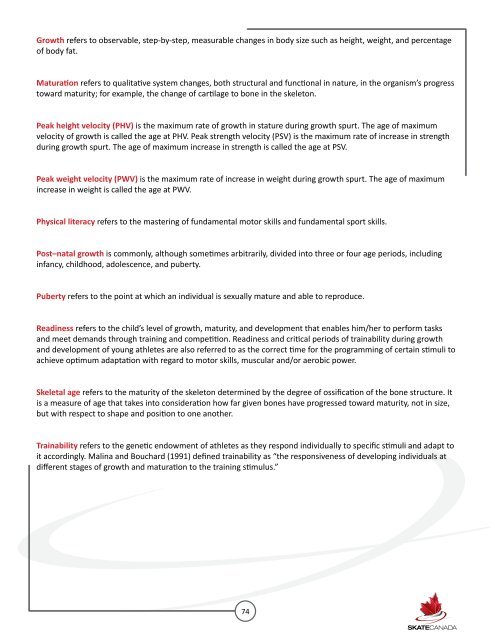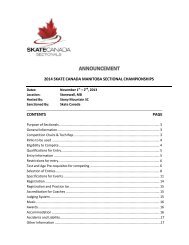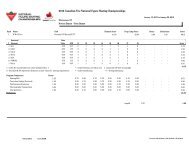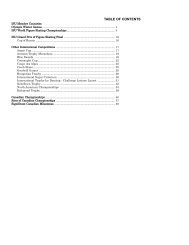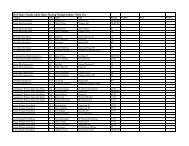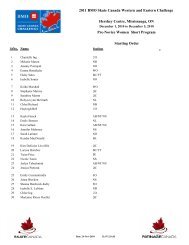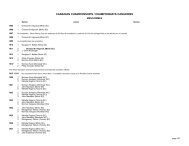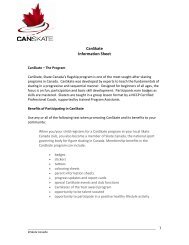LONG-TERM ATHLETE DEVELOPMENT - Skate Canada
LONG-TERM ATHLETE DEVELOPMENT - Skate Canada
LONG-TERM ATHLETE DEVELOPMENT - Skate Canada
Create successful ePaper yourself
Turn your PDF publications into a flip-book with our unique Google optimized e-Paper software.
Growth refers to observable, step-by-step, measurable changes in body size such as height, weight, and percentage<br />
of body fat.<br />
865 Sheord Road, Ottawa, Ontario K1J 1H9<br />
Phone 613.747.1007 I Toll Free 1.888.747.2372 I Fax 613.748.5718 I Toll Free Fax 1.877.211.2372<br />
Maturation refers to qualitative system changes, both structural and functional in nature, in the organism’s progress<br />
toward maturity; for example, the change of cartilage to bone in the skeleton.<br />
Peak height velocity (PHV) is the maximum rate of growth in stature during growth spurt. The age of maximum<br />
velocity of growth is called the age at PHV. Peak strength velocity (PSV) is the maximum rate of increase in strength<br />
during growth spurt. The age of maximum increase in strength is called the age at PSV.<br />
Peak weight velocity (PWV) is the maximum rate of increase in weight during growth spurt. The age of maximum<br />
increase in weight is called the age at PWV.<br />
Physical literacy refers to the mastering of fundamental motor skills and fundamental sport skills.<br />
Post–natal growth is commonly, although sometimes arbitrarily, divided into three or four age periods, including<br />
infancy, childhood, adolescence, and puberty.<br />
Puberty refers to the point at which an individual is sexually mature and able to reproduce.<br />
Readiness refers to the child’s level of growth, maturity, and development that enables him/her to perform tasks<br />
and meet demands through training and competition. Readiness and critical periods of trainability during growth<br />
and development of young athletes are also referred to as the correct time for the programming of certain stimuli to<br />
achieve optimum adaptation with regard to motor skills, muscular and/or aerobic power.<br />
Skeletal age refers to the maturity of the skeleton determined by the degree of ossification of the bone structure. It<br />
is a measure of age that takes into consideration how far given bones have progressed toward maturity, not in size,<br />
but with respect to shape and position to one another.<br />
Trainability refers to the genetic endowment of athletes as they respond individually to specific stimuli and adapt to<br />
it accordingly. Malina and Bouchard (1991) defined trainability as “the responsiveness of developing individuals at<br />
different stages of growth and maturation to the training stimulus.”<br />
74


